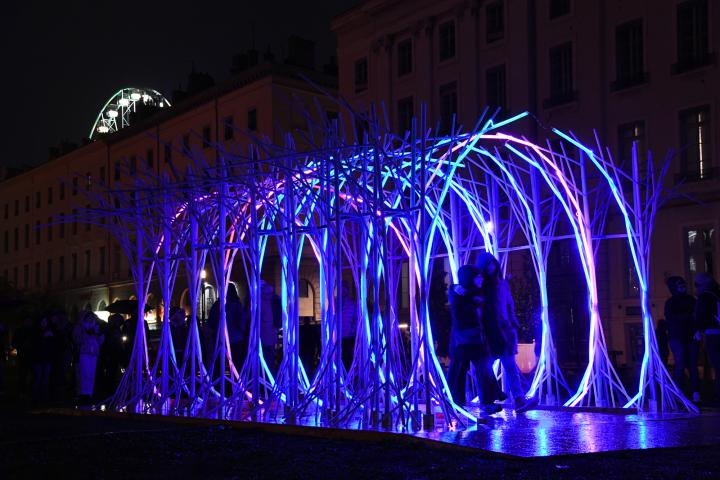Find out more
The Shape of Things to Come consists of two parallel vertical walls of recycled plastic rods. These emerge from the ground and intertwine at the top, creating a kind of canopy. It forms an arch inviting the spectator to enter its core.
From the inside, the viewer walks through this organic form, observing the changing light generated by the sensors. From the outside, the viewer wanders around this strange landscape, where body, light and matter mingle. They contemplate the dialectic between plastic and the often invisible phenomenon of atmospheric pollution, where the air is materialised in a surface made from waste.
The intensity and quality of the light baths sublimate the material and tell the story of the variations in air quality over the last 15 days on the scale of a city or region. As it moves along this timeline, it also leaves its wake, like an allegory of its imprint on the area.
Based on the principles of biomimicry, its shape and design are inspired by the architecture of garden birds' nests. In the same way that these birds gather what they find in nature to make their habitat, it is made from recycled plastic, in a process of transforming waste into artistic material.
Its interactive device, inspired by kinetic art, reveals the traces left on the planet by some of our polluting activities. Contrary to the rhetoric of the collapsologists, it proposes a 'restorative' perspective, materialised by a potential nest and the promise of an ecologically responsible use of our planet's resources.
In this way, the installation devised by Diego Ortiz and Hernan Zambrano acts both as a revealer and a source of information, and as a sentinel and refuge: while alerting us to our role in atmospheric pollution, it offers us the prospect of concrete alternatives for our lifestyles, such as frugality, reuse and observation of living things.
This piece, designed for the public space, is an important milestone in the desacralisation of the work of art.


















